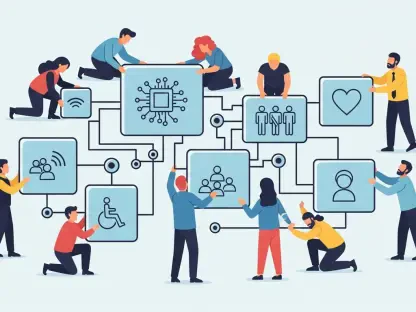In the rapidly evolving world of business, Artificial Intelligence (AI) has transitioned from a futuristic novelty to an integral component of modern operations. AI’s diverse applications are revolutionizing industry standards, amplifying the capabilities of businesses both big and small. This technological wave is leveling the playing field, making sophisticated business strategies accessible to a broader audience and signifying the advent of a transformative period in business processes.No longer confined to the echelons of large corporations, AI tools are enhancing efficiency and fostering innovation in businesses of all sizes. Organizations are able to connect with customers and operational data in ways that were once thought to be exclusive to those with expansive resources. From improving decision-making to automating routine tasks, AI’s impact is significant, signaling both a challenge and an opportunity for companies ready to embrace this change.The democratization of such advanced processes implies that businesses can compete in ways that prioritize strategic thinking and creativity, driven by data and machine learning technologies. As a result, a landscape where businesses operate on a more level playing field is emerging. AI’s role in this transformation is undeniable, firmly establishing itself as a cornerstone of business success in the contemporary marketplace and promising an exciting future for companies ready to harness its potential.
AI-Powered Efficiency in Business Operations
Streamlining Administrative Tasks with AI
Automating administrative tasks is one of the quintessential applications of AI in the modern workplace. Tools such as Fireflies and Speechify exemplify this very trend. With Fireflies, capturing notes from meetings becomes effortless, as its AI algorithm is adept at understanding and documenting critical points in any conversation. This capability not only saves time but also enhances the accuracy of information recorded, mitigating the risk of human error.Speechify carries this notion forward into the realm of content consumption. By converting text into natural-sounding speech, it allows professionals to digest information without having to dedicate their visual attention, thus enabling multitasking or learning during commutes. The use of such tools is becoming increasingly widespread as businesses recognize the value in maximizing their employees’ cognitive resources, optimizing work time, and adapting to varied learning and working styles.
Optimizing Management with Predictive Analytics
AI-driven predictive analytics has dramatically transformed management strategies, providing leaders with insights that inform smarter decision-making. Systems that analyze patterns in data can forecast sales trends, project customer behaviors, and optimize inventory levels. This not only anticipates market shifts but also prepares businesses to adapt proactively rather than reactively.Predictive analytics also extends into workforce management, identifying high-risk points for employee turnover or highlighting areas for potential improvement in productivity. Such insights allow managers to craft targeted strategies to bolster employee satisfaction and retention. By harnessing AI’s ability to analyze vast amounts of data, companies can refine their operations to align closely with their strategic objectives, often resulting in a stronger competitive edge.
Fostering Business Creativity through AI
Content Generation and Marketing Enhancement
In the realm of content generation, tools like Jasper and Anyword have taken center stage, pioneering the way businesses approach writing and marketing. These AI-driven services harness the power of Natural Language Processing (NLP) to craft compelling content that rivals human creativity. But beyond just providing sleek prose, they also offer valuable analytics that can predict how audiences might respond to the generated text.This fusion of content creation and predictive analytics is revolutionizing marketing strategies. The ability to quickly produce high-quality copy tailored to specific demographics eliminates the barrier of traditional content development cycles. Marketers can test different approaches, iterate rapidly, and deploy winning strategies with greater confidence. AI in content creation is not just about efficiency; it’s about infusing a new level of sophistication and personalization into marketing efforts.
Innovating Design and Multimedia
Creativity in multimedia and design is another area where AI tools shine. Platforms like Pictory and D-ID illustrate how AI can transform simple text inputs into engaging video content or generate professional-grade headshots in moments. Pictory uses AI to edit videos that resonate with the intended message, while D-ID provides rapid and tailored professional headshots, minimizing the time and cost of traditional photoshoots.These tools democratize high-level design tasks, making them accessible to businesses without extensive resources. With AI handling the intricate aspects of design and multimedia production, companies can focus on the creative direction and overarching narrative. This not only saves significant time and money but also allows businesses to respond dynamically to market demands, constantly freshening their brand image and communication strategies with minimal effort.In summary, AI has become a linchpin in the evolution of modern business strategies. It has facilitated a shift toward greater efficiency, unleashed creativity, and fostered connectivity in ways that were previously unattainable. As AI tools evolve and integration within businesses deepens, the transformative effects on business operational fluency and growth are set to expand even further, reinforcing AI’s role as an indispensable asset in the corporate world.









